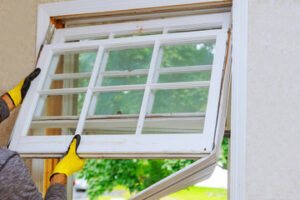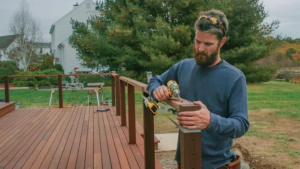All wastewater drained from toilets, showers, sinks, and garbage disposal enters your septic tank. As it collects, it separates into three layers: scum, effluent, and sludge. Contact Septic Tank Armadale now!
Scum layers include oils and soaps that float to the surface of water. Sludge layers are made up of dirt, grit, bones, and unconsumed food. Bacteria in the septic tank break down these solids and produce gases.

A septic tank is a large, underground container that holds wastewater from your home. It separates solid waste and liquids from sewage, protecting soil and groundwater from contamination.
Your toilets, dishwasher, washing machine, and other drains pump water into your septic system through pipes. As the wastewater flows through, bacteria in your septic tank work to break down fecal matter and other organic waste, turning it into a slurry of liquid and sludge. The sludge layer sinks to the bottom of your septic tank while the scum layer floats on top. Aerobic bacteria in the septic tank help digest fatty acids and other floating materials.
Solids in the septic tank eventually form a thick, dark-colored sludge that is pumped out and into a buried absorption field, where it is slowly absorbed into the soil. Effluent from your septic system seeps into the ground through perforated pipes.
When properly cared for, a septic tank can last up to 40 years without issues. It is more environmentally friendly than a sewer system and can let you live further away from cities. However, you’ll need to monitor your septic system for signs of failure or problems such as unusual odors, slow drainage or sewage backup in your toilets.
There are several parts to a septic system including a septic tank, an absorption field, and a leach line. The septic tank is a concrete, fiberglass or plastic container that holds the wastewater from your house. It is buried underground, typically 10 to 25 feet from your house. Depending on the size of your house, you may need a larger or smaller septic tank.
Your septic tank contains inlet and outlet baffles to keep sludge from leaving the septic tank until it is pumped out. Your septic tank also has inspection ports so you can use cameras or tools to check the condition of your septic system.
A septic tank must be properly installed and regularly maintained to function properly. It’s best to have your septic system inspected before buying or selling a home, as local health departments may have regulations regarding septic tanks. You should also avoid building anything on or near your septic tank, especially a storage building or driveway. Heavy traffic or driving on a leach field can compact the soil, blocking the flow of effluent from your septic system and interfering with its normal operation.
How does a septic tank work?
The plumbing inside your home drains into a septic tank, which is located outside the house. The septic tank works as a settling basin where solid waste accumulates and gradually gets broken down by bacterial action. Over time, heavy solids sink to the bottom of the septic tank and form a layer of sludge, while fats and oils float to the top and form a semi-solid scum. Wastewater between these two layers stays in the septic tank and eventually exits into a drainfield area through a T-shaped outlet with a screen to block large particles.
Once wastewater leaves your septic tank it flows into a distribution box that has multiple outlets to evenly distribute the liquid wastewater throughout the drainfield. The septic tank is usually constructed of concrete, fiberglass or a combination of both. The distribution box has a network of perforated pipes that extend into a shallow area of soil called the absorption field (also known as a leach field).
In the drainfield, wastewater seeps through perforated pipes in a bed of gravel and grass that filter it into underground aquifers. The wastewater is treated further by microbes that naturally digest any remaining organic waste matter.
If your septic system is not functioning properly, the bacteria that break down the waste matter and treat the water could die off, leaving the septic tank to fill up and overflow or the entire septic system to back up into the house. You can help the bacterium stay alive by being careful about what goes down your drains. Avoid putting paper towels, cotton balls, cooking oil, greases and other fats, solvents, toxic chemicals, pet waste, and baby wipes into the plumbing.
Bacteria generate gases as they decompose the waste matter in your septic tank. These gases must be vented to prevent the build-up of pressure that could clog or shut off the drains in your house. The gases are released through a vent pipe that is usually shaped like a mushroom and can be fitted with a charcoal filter to reduce odors. It is also important to periodically clean the vent to keep it free of critters and other unwanted intruders.
What should I do if I have a septic tank problem?
If the drains in your home slow to a crawl or start backing up, this may be a sign that the septic tank is full. This can lead to sewage leaking into the house plumbing and can be dangerous. Sewage leaks also affect the surrounding soil and can cause environmental damage.
Foul odors around the house or in the yard are another sign of a septic system problem. Bacteria in the septic tank produce waste gas as they break down waste, and this is normally vented outside through your rooftop and septic system vents. If you notice foul odors in the home or yard, this could indicate that the septic tank is clogged or there is a problem with the ventilation.
Another common septic tank problem is that the outlet baffle or effluent filter is clogged. This can cause sewage to back up into the house plumbing and/or surface near the septic tank or leach field. This can usually be fixed by getting the septic tank pumped and examining the baffle or effluent filter. You can help prevent this type of problem by only flushing toilet paper and human waste, using the proper drain cleaners, and having your septic system inspected annually.
If the septic system has a dip pipe, it is important to make sure that it does not get knocked off during the emptying process. The function of the dip pipe is to ensure that only the right types of waste enter the septic system soakaway system and drainage field. If you knock the dip pipe off, the wrong kinds of waste will go into your septic system and eventually clog the drainage field. Proper waste disposal, only flushing toilet paper and human waste, and avoiding the use of non-septic safe products like wipes, sanitary products, and grease can avoid this kind of problem. If you suspect a problem with your septic tank, contact a professional plumber for an inspection and service. A septic tank that is not properly cared for can result in a costly and unsanitary situation for you and your family.
How often should I pump my septic tank?
Many homeowners who live in rural areas of the country rely on septic tanks for their waste disposal. If you are new to septic tank ownership, it can be hard to know how often your tank needs to be pumped out. The best way to determine how often your tank should be pumped is to monitor the levels of sludge and scum in the tank. A simple stick can be used for this purpose. Keeping the stick upright, you can slowly lower it into the septic tank, even through the thick sludge layer, and then feel for it to hit the bottom of the tank. This will allow you to estimate the level of sludge in the tank based on the number of inches along the velcro strip on the stick.
The number of people in your household will also play a role in how often you need to have your septic tank pumped out. A household with more people will use a greater amount of water, and the tank will fill up faster than a single person’s usage would. The size of the septic tank is another factor in determining pumping frequency. Smaller tanks fill up more quickly than larger tanks, so they need to be pumped out more frequently.
A septic tank can be filled with a healthy layer of sludge and scum, but this is not a sign that the system is working well. In fact, a septic tank that is full of solid materials can be extremely dangerous for your family, because the bacteria in the septic system will have nowhere to go and may begin to overgrow into the drain field. This can lead to clogs and other issues with the wastewater system.
Having the tank pumped out more frequently will keep the sludge and scum in check, and it will ensure that the bacteria are able to work as they should. It is also important to avoid using septic tank additives, as they can interfere with the anaerobic digestion process.
You should also keep an eye out for a foul smell near the drains in your home, slow draining, or gurgling noises. These are all signs that your septic tank is close to being full and that you need to schedule an appointment to have it pumped out soon. By catching this issue early, you can avoid costly septic tank repairs.


